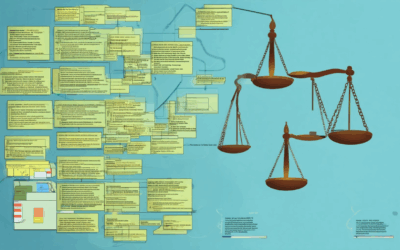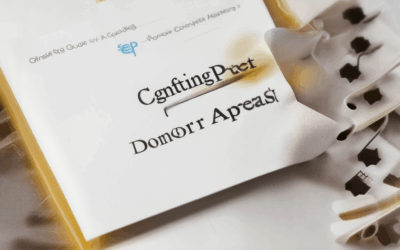Are you looking for proven strategies to keep your donors engaged and loyal to your cause? In today’s competitive landscape, retaining donors isn’t just nice to have—it’s essential for the survival and growth of your organization. Did you know that retaining existing donors can save your organization up to 50% on acquisition costs compared to attracting new ones? This comprehensive guide dives into the intricacies of donor retention, offering practical strategies and insights to help you build lasting relationships with your supporters. We’ll explore what defines good donor retention, examine the average donor retention rates across industries, and delve into proven strategies to increase donor loyalty. By implementing these strategies, you’ll not only strengthen your donor relationships but also drive sustainable growth for your mission.
Key Takeaways
- Prioritize Donor Retention: Essential for sustaining funding and building lasting supporter relationships.
- Calculate Donor Retention Rate: Use the formula to measure and monitor your organization’s performance.
- Enhance Donor Loyalty: Focus on personal connections, consistent engagement, gratitude, and legacy opportunities.
- Tech Tools for Donor Management: Implement CRM systems to streamline tracking and improve donor interactions.
- Analyze and Act on Data: Measure retention rate increases, identify contributing factors, set goals, and refine strategies.
- Comprehensive Insights: Understand the formula and apply it to your donor strategy for better outcomes.

What is Considered Good Donor Retention?
The average donor retention rate across nonprofits is approximately 35%, though many organizations aim to achieve a rate between 35-45% to be deemed successful. However, the true measure of good donor retention goes beyond mere statistics. It involves fostering meaningful connections and ensuring donors feel valued and connected to your mission.
Key Aspects of Good Donor Retention:
- Personalized Communication : Tailor interactions to individual donor preferences and acknowledge their contributions promptly. This builds trust and reinforces their commitment to your cause.
- Consistent Engagement : Keep donors informed about how their contributions are impacting the mission. Regular updates and storytelling about your initiatives can deepen their connection and motivation to continue supporting.
- Multiple Giving Options : Offer flexible donation methods, such as recurring contributions or alternative payment channels, to cater to diverse donor preferences and convenience.
- Community-Building : Create opportunities for donors to engage with like-minded individuals through events, newsletters, or social media groups, fostering a sense of belonging and shared purpose.
- Recognition and Rewards : Consistently appreciate donors through acknowledgments, exclusive perks, or special events. This reinforces their importance to your organization and encourages continued support.
- Responsive Listening : Actively seek donor feedback and address their concerns or suggestions. This demonstrates transparency and valuing their input, which enhances loyalty.
By integrating these strategies, nonprofits can cultivate enduring relationships with donors, not only retaining them but also building a loyal advocate base that drives sustained organizational success.
How to Increase Donor Giving
To boost donor contributions, consider implementing the following strategies:
- Personalized Communication: Segment your donor base and send tailored messages. Include a personal note from your leadership to convey appreciation.
- Storytelling:** Share impactful stories and success stories in newsletters, videos, or case studies to highlight program outcomes.
- Easy Donation Process:** Ensure your website has a seamless donation interface with clear CTAs like “Donate Now.” Offer multiple donation options, including recurring and mobile giving.
- Engagement and Relationships:** Maintain regular communication with donors through updates and newsletters. Host events to foster connections and loyalty.
- Urgency:** Create limited-time opportunities, such as matching gifts or challenges, to inspire immediate action.
- Digital Platforms:** Leverage social media and video content to broaden your reach and engage potential donors effectively.
- Value-Aligned Messaging:** Clearly articulate how donations align with donors’ values and provide transparent impact reports to build trust.
- Partnerships:** Collaborate with local businesses and influencers to expand your network and attract new supporters.
- Website Optimization:** Ensure your donation pages are secure, user-friendly, and include trust badges to enhance donor confidence.

What is the Average Donor Retention Rate for Nonprofits?
According to the Fundraising Effectiveness Project, the average donor retention rate for nonprofits typically falls between 40-45%. However, this can vary significantly depending on the organization’s strategies, industry, and donor demographics.
NPO Expert’s research indicates that nonprofits adopting a digital-first approach to fundraising often experience higher retention rates. These organizations see an average donor retention rate of 53% across all fundraising channels, highlighting the importance of integrated marketing strategies.
- Key Factors Influencing Donor Retention:
- Personalized communication and engagement strategies
- Regular donor appreciation and recognition
- Clear mission alignment and consistent messaging
- Efficient donor management systems
Competitors in the nonprofit space, such as DonorPerfect and Classy , have also reported similar trends, emphasizing the role of technology and data-driven approaches in improving donor retention.
To further enhance donor retention, NPO Expert recommends:
- Implementing automated donation reminders
- Creating targeted email campaigns based on donor behavior
- Offering multiple giving options, including recurring donations
- Focusing on volunteer retention programs
For more insights into nonprofit fundraising strategies, explore NPO Expert’s comprehensive fundraising guides and learn how to optimize your organization’s donor retention efforts.

What is the formula for donor retention?
Donor retention is a critical metric for nonprofit organizations aiming to sustain their funding and build long-term relationships with contributors. The formula to calculate donor retention rate involves measuring the percentage of donors who return to support your organization over a specified period. Here’s a step-by-step breakdown:
Donor Retention Rate Formula
The donor retention rate can be calculated using the following formula:
- Repeat Donors (This Year) ÷ Total Donors (Last Year) × 100 = Donor Retention Rate
Where:
- Repeat Donors (This Year) refers to the number of donors who made contributions this year after having previously donated.
- Total Donors (Last Year) refers to the total number of unique donors who contributed last year.
Example: If 159 donors returned to contribute this year out of 300 donors from last year, the donor retention rate would be:
(159 ÷ 300) × 100 = 53%
Key Considerations
While the formula provides a quantitative measure, several qualitative factors also play a role in donor retention:
- Personal Connection: Donors are more likely to retain their support when they feel connected to the organization through personalized communication and recognition.
- Consistent Engagement: Regular updates, meaningful requests, and consistent communication help maintain donor interest and loyalty.
- Gratitude and Recognition: Expressing sincere thanks and acknowledging donations can significantly boost donor retention.
- Legacy Giving Opportunities: Encouraging donors to plan for future contributions can create a lasting connection.
Tools and Resources
To effectively track and improve donor retention, consider utilizing donor relationship management (CRM) tools like DonorPerfect , Salesforce , or Blackbaa . These platforms provide comprehensive analytics and features to streamline donor tracking and engagement efforts.
Conclusion
Donor retention is not just about applying a formula—it’s about fostering meaningful relationships and consistently meeting donor expectations. By understanding and acting on the factors that drive donor retention, nonprofits can build a loyal supporter base that contributes to the organization’s long-term success.
How to Calculate Retention Rate Increase
To determine the increase in your organization’s retention rate, follow these steps:
- Gather Historical Data : Retrieve the number of returning customers from your customer database for the same timeframe in the previous year.
- Calculate Current Retention Rate :
- Use the formula:
[ \text{Retention Rate} = \left( \frac{\text{Number of Returning Customers}}{\text{Total Number of Customers at the Start of the Period}} \right) \times 100 ] - Determine Previous Retention Rate : Apply the same formula using last year’s data.
- Compute the Increase :
- Subtract last year’s retention rate from this year’s retention rate to find the percentage point increase.
- Analyze Contributing Factors : Identify internal and external factors influencing the increase, such as improved customer service, new product launches, or market conditions.
- Visualize the Data : Create charts or graphs to illustrate the trend over time, aiding in understanding the progression of retention rates.
- Set Future Goals : Based on the increase, establish targets for subsequent periods to sustain or further enhance retention rates.
- Implement Strategies : Use insights gained to refine strategies, such as loyalty programs or customer support enhancements, aiming to maintain or boost retention rates.
By systematically applying these steps, you can effectively measure and communicate the growth in your retention rate, driving informed decision-making and continuous improvement efforts.

Basic Retention Formula
The basic retention formula calculates the percentage of employees who remain with an organization over a specified period. Here’s the breakdown:
- Formula :
Retention Rate = (\frac{\text{Number of Retained Employees}}{\text{Original Number of Employees}} \times 100) - Calculation Example :
- Suppose an organization starts with 100 employees and retains 80 after one year.
- Plugging into the formula:
Retention Rate = (\frac{80}{100} \times 100 = 80\%) - Interpretation :
- An 80% retention rate means 80 out of 100 employees stayed.
- Higher percentages indicate stronger employee retention.
- Importance :
- High retention reduces turnover costs and enhances team stability.
- Low retention may signal issues like poor leadership or work environment.
- Tracking Over Time :
- Annual tracking helps identify trends, such as first-year, second-year, and third-year retention rates.
- This provides insights into employee satisfaction and organizational commitment.
By understanding and applying this formula, organizations can monitor and improve their retention strategies, fostering a more engaged and stable workforce.





0 Comments